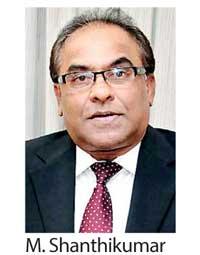Reply To:
Name - Reply Comment
By Shabiya Ali Ahlam
The price of holding meetings and events in Sri Lanka has increased significantly in the recent months and is expected to expand further, a senior representative of the hotel sector said.
 The Hotels’ Association of Sri Lanka (THASL) shared that with the escalating cost of goods and utilities in the island nation, the hospitality sector is pushed to increase its charges for events and meetings.
The Hotels’ Association of Sri Lanka (THASL) shared that with the escalating cost of goods and utilities in the island nation, the hospitality sector is pushed to increase its charges for events and meetings.
The charges for meetings and events have gone up by about 25 percent and are likely to increase further in the near future, THASL President M. Shanthikumar told Mirror Business.
The increase in charges took place over the last two months.
“It is becoming increasingly difficult for the hotels to maintain revenues. We are taking a massive hit. Due to the steep increase in prices witnessed in the county, the hotels are compelled to increase the prices of events. We can’t absorb the shock any longer,” said Shanthikumar. Although there are scheduled and pre-booked events such as weddings that were postponed due to the COVID-19 pandemic, the scale of the events has been trimmed down by about 30 to 40 percent
on average.
THASL chief attributed the reduction of covers for events to the affordability factor, where the purchasing power of locals are diminishing with the depreciation of
the LKR.
“Weddings for 350 and 400 plus packs are less now. Even those that were booked for that many covers are reduced to 150 to 200 covers. People cannot afford it anymore,” he shared.
Events and meetings are key revenue-generating avenues for the hotel sector. With the drop in tourist arrivals, the revenues of hotels are taking a massive hit.
Shanthikumar also shared that a drop is observed in locals frequenting restaurants of hotels. While before the forex and COVID-19 crisis, restaurants had high occupancy, over 75 percent, the current scenario is no more the same. “People don’t have as much disposable income as they did before. They don’t spend as much as they used to and we are seeing this in our restaurants. The number of locals coming in now is much less,” he said.